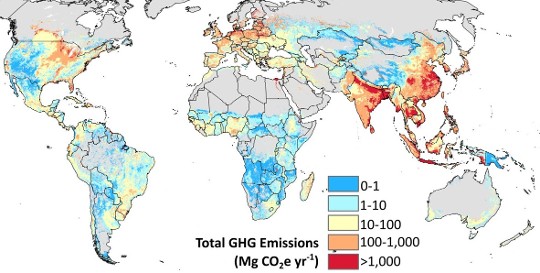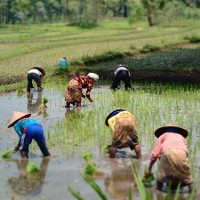29 November 2016
Study maps the climate impact of agriculture
Peatland drainage and rice production have an outsized impact on greenhouse gas emissions from agriculture—accounting for about 80% of total greenhouse gas emissions from cropland—according to a study published last week in the journal Nature Climate Change.
Agriculture as a whole is responsible for about a third of human-caused greenhouse gas emissions, making the sector an important target for policymakers aiming to reduce emissions. At the same time, in order to feed the world’s growing population, food production will need to substantially increase in coming years.
The new study assesses emissions from cropland management for specific crops at a global scale, showing both the overall emissions as well as the amount of emissions per calorie, or emissions intensity.
IIASA researchers contributed spatially explicit layers on manure production and manure management systems to the study, in collaboration with researchers at the Commonwealth Scientific and Industrial Research Organization (CSIRO) in Australia.
“Although nitrogen from manure represents only about 22% of total nitrogen applied to croplands, in countries such as Denmark, Netherlands or Russia, it represents about 50% and hence needs to be properly accounted for. From the greenhouse gas mitigation perspective, it is interesting that 44% of manure application is concentrated in only four countries: China, USA, India, and Brazil. Hence, focusing the mitigation on a few countries can bring substantial GHG emissions reduction. ” says IIASA researcher Petr Havlik, a study coauthor.
Read more: Press Release from the University of Minnesota, USA

Greenhouse gas emissions from cropland. © Carlson et al (2016).
Reference



